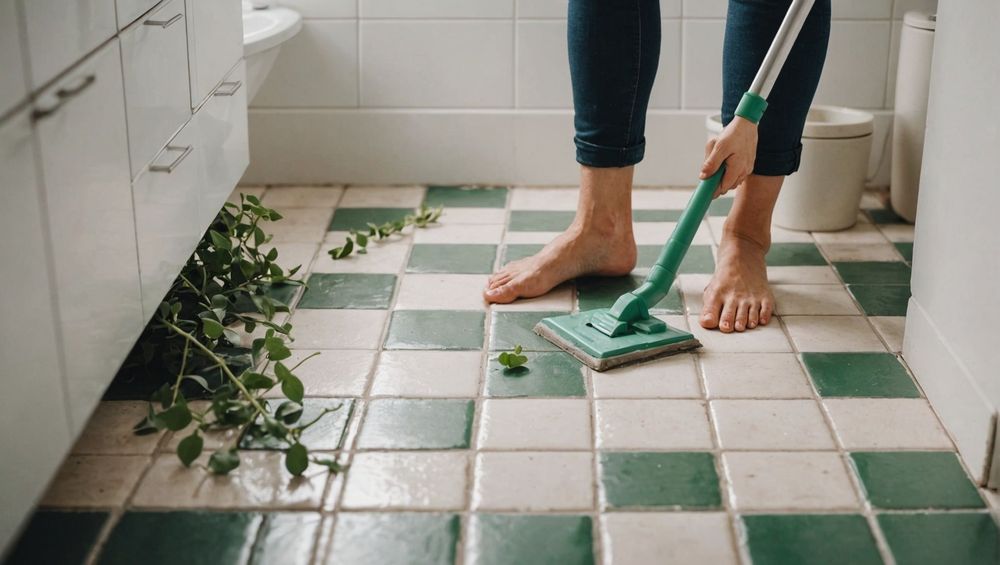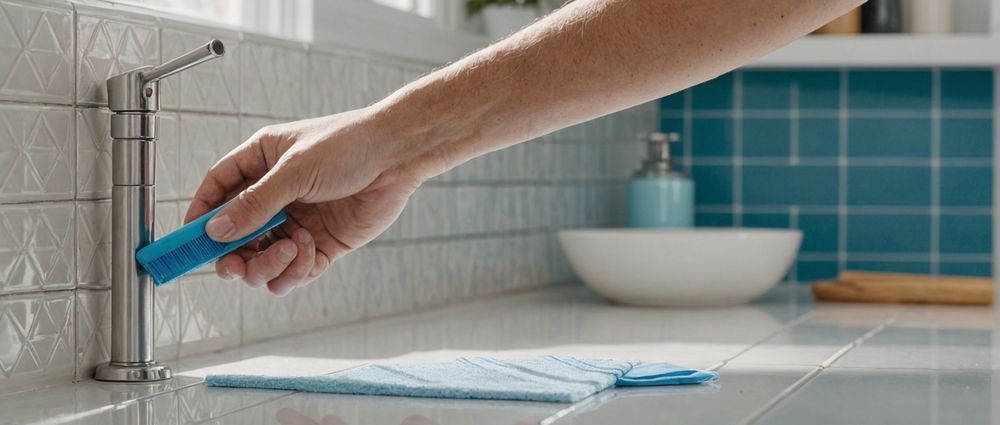Cleaning grout on tile floors, showers, and other surfaces can seem like a daunting task, but with the right methods, it can be simplified. Grout often accumulates dirt and stains, making it look dingy over time. However, regular maintenance and the proper cleaning techniques can restore its original shine and freshness. In this article, we’ll delve into effective methods for cleaning grout, ensuring that your tiles look pristine and your bathrooms feel welcoming.
Understanding Grout and Its Vulnerabilities

Grout is a porous material, primarily composed of sand and cement, which makes it susceptible to staining and soiling. Its texture allows dirt, mold, and mildew to seep into it, especially in damp areas like kitchens and bathrooms. Understanding the nature of grout can help you choose appropriate cleaning methods. Since grout typically comes in different colors and compositions, it’s important to test any cleaning solution in a small, inconspicuous area before applying it widely. Here are some key points about grout:
- Grout can be cement-based or epoxy-based, with cement grout being more porous.
- Regular cleaning can help prevent long-term staining and damage.
- Mold and mildew thrive in moist environments, making bathrooms particularly vulnerable.
- Grout sealing can extend the time between cleanings and maintain its appearance.
- Different cleaning methods may be needed for different types of grout.
Essential Tools and Cleaning Solutions

To effectively clean grout, you’ll need some essential tools and cleaning solutions. Having the right items on hand can significantly enhance your efficiency and results. Here’s a basic list of tools and solutions to gather before you begin:
- Baking Soda: A gentle abrasive that helps lift stains.
- White Vinegar: An excellent natural disinfectant that can dissolve grime.
- Toothbrush or Grout Brush: Necessary for scrubbing the grout lines effectively.
- Spray Bottle: Useful for mixing and applying cleaning solutions evenly.
- Protective Gloves: Essential to protect your hands from harsh chemicals.
Step-by-Step Guide to Clean Grout
Now that you have your tools ready, let’s go through a step-by-step process on how to clean grout effectively. It’s advisable to work in sections to manage the task without being overwhelmed.
1. Prepare the Area
Begin by removing any loose debris or dirt from the tile surface.
2. Create Your Cleaning Solution
Mix equal parts of white vinegar and water in the spray bottle. If stubborn stains persist, make a paste of baking soda and water.
3. Apply the Solution
Spray the cleaning solution directly onto the grout lines and let it sit for about ten minutes.
4. Scrub the Grout
Use your toothbrush or grout brush to scrub the grout lines. Work in small sections for better results.
5. Rinse and Dry
Finally, rinse the area with clean water and dry it with a towel to avoid new stains.
Preventive Measures for Grout Maintenance
While a thorough cleaning is important, taking preventive measures can save you time and effort in the long run. Below are some practices that can help keep your grout looking new:
- Seal the Grout: Applying a grout sealer helps protect against stains and moisture infiltration.
- Regular Cleaning: Schedule regular cleanings to avoid buildup and staining.
- Address Grime Promptly: Wipe down surfaces to remove spills or stains before they settle.
- Improve Ventilation: Ensure proper airflow in bathrooms to reduce mold and mildew growth.
- Avoid Harsh Chemicals: Some harsh cleaners can damage grout, so always check compatibility.
Conclusion
Cleaning grout on tile floors, showers, and other surfaces doesn’t have to be a difficult chore. By understanding the nature of grout, using the right tools and solutions, and following a systematic cleaning method, you can achieve effective results that keep your spaces looking great. Additionally, incorporating preventive measures will help maintain the integrity of your grout and save you time in the future.
FAQs
1. How often should I clean my grout?
It’s recommended to clean grout every few months, but high-traffic areas or showers may need more frequent attention.
2. Can I use bleach to clean grout?
While bleach can be effective for some stains, it may discolor grout over time. Use it cautiously and always test beforehand.
3. What is the best homemade grout cleaner?
A mixture of baking soda and vinegar is an effective homemade cleaner. Apply the paste, let it sit, then scrub and rinse.
4. Does sealing grout really help?
Yes, sealing grout creates a protective barrier that helps repel moisture and stains, making maintenance easier.
5. Can I use a steam cleaner on grout?
Yes, steam cleaners can effectively sanitize and clean grout without harsh chemicals. Ensure you follow the manufacturer’s guidelines.